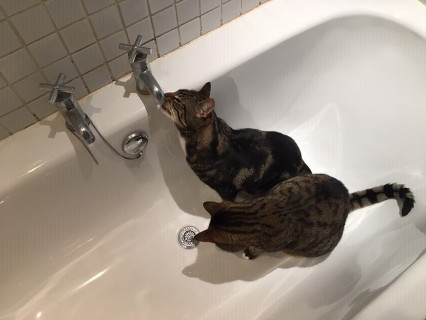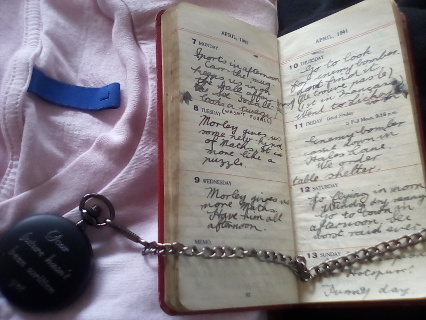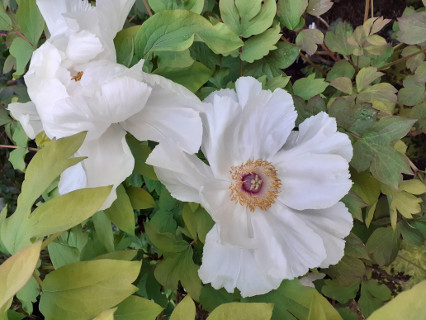All of our library, archive and museum services team are now working from home. The museum is closed to the public, no-one can come in to research, and we’re delivering library services online as much as we can. Today we take you behind the scenes to find out what our team are up to in this ‘new normal’.

Corinne Harrison, library, archive and museum services officer
The past few weeks have been something of an emotional rollercoaster. I like coming into the office, chatting to colleagues, seeing our collections on display and looking out the window onto our medicinal garden (important thinking time).
As an inveterate procrastinator, I continue to put things off. Before we were working from home, I was scoping a project to ensure that all 7,500 entries in Inspiring Physicians (the RCP’s collection of biographies also known as Munk’s Roll) have a portrait. Our library project assistant, Alex, is powering through volume 1 and I will, soon, definitely, start on volume 7.
I was much more decisive when offered two cats to look after when their owner wanted to return to her family in Canada, even though I’ve never had a pet before. I’m expected to adjust to their schedule – what can you do when a cat headbutts you at 4am demanding breakfast? – but they are good company in an empty building.
Elizabeth Douglas, collections officer
I’m in the sixth week of my job as the new collections officer at the RCP. Alongside the normal settling in and familiarising myself with the objects, I soon had to adapt to caring for a collection remotely. It’s been an unusual start but my team have been very supportive and we’re finding new ways of working together.
Prior to the lockdown I’d never video-called a museum collection before. Last week, John from Security called me from the stores so I could do visual checks. The artefacts offered little in the way of conversation but they were all looking well and their temperature and humidity was stable for their preservation.
This week I’ve continued work on collections rationalisation by writing acquisition and disposal proposals. This ensures that collections are sustainable, refined and therefore more accessible. It’s a lengthy and thoughtful process, allowing me to delve deep into object research.
I’m proud to see the heritage sector pulling together to share best practice. How to care for collections remotely and how to approach contemporary collecting of COVID-19 material are on many people’s minds. I’ll be discussing these with my colleagues and peers during conference calls over the coming weeks.

Lowri Jones, senior curator
Much of my work is desk-based anyway, but working from home makes me miss the collections, and the smell of the storerooms. I also miss my colleagues, and the office – although the 5 minute commute is much nicer than my usual one (‘commute’ now meaning ‘the time it takes for my very old and slow laptop to boot up’).
Curating a medical history collection means that there’s a lot to think about at the moment; I have been reworking our exhibition schedule for the next couple of years to take into account the disruption and to allow us to consider how we can incorporate coronavirus into relevant displays in a sensitive way. I’ve also been discussing how the museum might record the current crisis, so that the collections can tell the stories of 2020 in the future.
Postponing an exhibition: Sarah Backhouse, exhibitions officer
It's a bit tricky installing an exhibition when you're working from home and your museum has closed. Because of COVID-19 we have postponed our next exhibition – due to open 29 April – until 2021. So the last couple of weeks have mostly involved contacting lenders, contractors and stakeholders to let them know about the postponement, and to ask if they could accommodate the change of date. Thankfully everyone has been very understanding, and in similar positions themselves. My biggest immediate challenge (now that my technology seems to be working) is to figure out how to work with a very distracting three-year-old at home!
Interlibrary loans team (Stephen Deed, Abigail Buck and Cristina Dario)
Although the three of us are now scattered across London, the RCP’s interlibrary loan team continues to source medical literature for the National Guideline Centre and our members. In that sense, it is business as usual.
In other ways though, how we work and what we can provide has changed dramatically. On the downside, many libraries now find themselves hampered by the licences which govern the use of their electronic journal collections. These often restrict libraries to supplying copies from ejournals in printed formats only. Many libraries cannot print and post, or receive printed items, under the current working arrangements, and these licences stop us from supporting the work of the RCP and the NHS as effectively as we could otherwise.
On a positive note, the closure of our main supplying libraries has forced us to completely reassess our chain of supply. As libraries closed over the first week of lockdown this was a quickly changing landscape. It has now settled down and we find ourselves with new allies, many of them university libraries. This is a positive outcome, and the ties forged now with new colleagues will remain after we return to working normally.
Karen Richardson, library, archive and museum services systems librarian
As a librarian that manages online databases, catalogues and websites there hasn’t been any real change to my day to day job. My real challenges have been to ensure that our enquiries phone line diverts directly to the enquiries team, wherever they’re physically located, and assisting my colleagues with personal technical issues which ranged from updating operating systems, identifying internet speed issues to make remote working compatible and of course investigating alternative methods of file sharing for those unable to connect/use the RCP remote working avenues.

Felix Lancashire, assistant archivist
I have been editing text for a display of Alfred Swaine Taylor’s archives. Alfred lived from 1806 to 1880 and was a pioneer in the field of forensic science. Who knows when anyone will be able to visit the display! However, many of the items have been digitised, so we will at least be able to share them on social media.
During the lockdown, I have even fewer excuses for avoiding working on the RCP’s repository for digital records, which (unfortunately!) I can access from home.
Suffering withdrawal symptoms from being able to handle any physical archives at work, I have finally gotten around (in my spare time) to going through my dad’s diaries. They start when he was 13 years old during the Second World War and run until 1998. It has been lovely getting to commune with him again through these pages.
Sarah Lowry, oral history project officer
It’s a strange time to be an oral historian. Our work relies on face to face in-depth interviews which simply cannot happen at the moment. Luckily there is always plenty to do in cataloguing, editing and transcribing the material we have recorded already so this is keeping me busy.
Everyone in the field is trying to work out the best way of conducting remote recordings and the technological and ethical issues involved in this. There has been debate for some time around the feasibility of using tools such as Skype, Zoom and mobile phones to record life stories and the current situation is bringing these discussions to a head. Crisis has always been a catalyst for change and this may be the case even for oral history! If we can find a good solution then I’m hoping we might employ these techniques to record the experiences of some RCP staff and document how they are adapting to all the changes and challenges.
I’m also thinking a great deal, both when working and not, about all the remarkable physicians that I’ve been lucky enough to meet and interview over the past five years. More than ever the current situation highlights the great importance of their work. Those that are still practising and therefore on the front line in the NHS response, and those recently retired that may have volunteered to go back to work are particularly in my thoughts. Thank you to you all.
Cristina Dario, inter-library loans librarian
I’ve been updating classification information in the library catalogue. There are approximately 20,800 records to work on! I’m ensuring consistency, and making sure the classification numbers match the subject matter, meaning that we can better assess what books we have in which subject areas. This will also make the experience of using our library much better for our readers: they’ll be able to browse the physical collection (when we’re back in the library) more easily, and we’ll be able to find things in our closed collection for them more quickly and easily than before.
Katie Birkwood, rare books and special collections librarian
My job is all about the long-term access to, preservation of, and understanding of books as physical objects with individual histories and stories expressed in their materiality. At first glance, it seems like a job that’s hard to do remotely.
I certainly couldn’t work away from the library full time for ever. But I started keeping a list of jobs and projects I could do remotely a few weeks before full working from home was implemented, and there are surprisingly many.
The heart of any library is the catalogue, and there’s lots of tidying and improving that can be done when far from the books themselves. So, like Cristina, I’m busying myself with that. I’m adding language and subject information to the individual records, and sorting out our links to digitised copies of texts, to help our future researchers find what they need.
And I’m lucky to have a garden to enjoy while I’m here. This is my newest rose, called ‘Shropshire Lass’. It doesn’t look like much so far, but who knows? I might still be here when she (hopefully) flowers in the summer.

The RCP also has a garden, dedicated to plants with medicinal connections. We spoke to the head gardener about how she’s handling the current situation.
Jane Knowles, head gardener
I’m working on site (with appropriate distancing measures) a couple of days a week. I’ve been able to keep on top of things, just about, and have got all the staking and mulching done. There’ll be more time needed though as summer approaches. It’s a shame the newly blooming flowers – like the tulips and the tree peonies – aren’t being seen by many people.
We’ve opened the garden as a place of rest and respite for local NHS workers, in tandem with offering accommodation in the RCP’s William Harvey House. And even I have been bringing my work home with me, strange as it sounds: I’ve been doing some potting and sorting seeds for belated sowing.
We know this is a troubling and difficult time for all our visitors, researchers, online followers and friends. We wish all of you, and all the workers in the NHS, in international healthcare, and other vital services, the very best.
Compiled by Katie Birkwood
